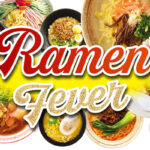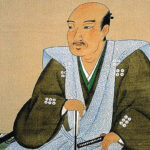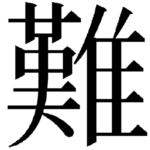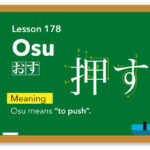

勝海舟 KATSU Kaishu
1823 – 1899
Name List of Kaishu
(Japanese historical figures change their names frequently.)
Rintaro (麟太郎) → Awanokami (安房守) → Yasuyoshi (安芳) → Kaishu (海舟)
The Shadow Samurai Leader for Meiji Restoration
Born in Edo, as a Son of Hatamoto, a Direct Retainer of the Shogun
Katsu Kaishu was born in 1823, at Ryogoku, Tokyo. Shokichi, his father was in charge of Hatamoto, one of the important positions that can see the shogun directly, but surprisingly his entire family was so poor with the least money at the currency of the Edo era. However, Shokichi had good relationships not only with shogun associates but also with gamblers, mafias, and fire fighters in Edo town. Later on, these connections helped Kaishu very much. They moved to Akasaka, Tokyo when Kaishu was at the age of 7.
Became Dutch Specialist
In his teen age, he learned and practiced a lot of sword fighting, then got a full proficiency of Jikishinkage Ryu Sword, plus Yamagaryu one. Few years later, despite his excellent sword technique, he was getting really tired of bloody unproductive fighting between low position samurais, so he slowly began to show off his academic talent. Kaishu started his Dutch study in 1842, next year, his writing skill has gone to another level. In 1845, he married Tami, then moved to Akasaka-tamachi, Tokyo. Since then, he started studying Dutch, harder than ever. Eventually, he succeeded to copy “Doeff-Halma”, Dutch-Japanese dictionary which has 3,000 pages by hand writing. This dictionary is a must buy for scholars who study Dutch, but the Edo shogunate wasn’t allowed to, according to the people who published it at that time, then Kaishu decided to pay a rental fee to shogunate to copy all by himself. After a while in 1848, he finished copying 2 of these dictionary, then sold one of them.
Ready for Black Ship (Perry’s Arrival)
After the Opium (Ahen) War, Kaishu’s idea was, ‘We have to make Japan strong by Dutch studies and military tactics’. In 1850, he opened the cram school specified to Dutch studies and military tactics. His foresight attracted young people, eventually he got hundreds of students who looked up to his knowledge about army and Dutch. As he predicted, Perry hit Uraga, Kanagawa, 3 years later to require Japan to open up for trading. Kaishu was preparing matchlock and his original written report for this incident. His effort made him famous among shogunate class people such as Abe Masahiro, elder council found out Kaishu’s extraordinary foresight, negotiation skills and political measures from his original written report. The overview details of his political measures are like this.
1. Debating or discussing in front of shogun about diplomacy and domestic affairs.
2. Make battleships, and do foreign trades at the same time.
3. Edo self defense plan when the enemy lands.
4. Founding army training school which has changed to Western army style.
5. The method to procure the resources for producing gunpowder.
These outlines were epoch for Masahiro, and he decided to hire Kaishu. Finally in 1855, he was hired as a Dutch translate specialist at the department of Japanese official public relations for overseas. He was just a poor Hatamoto kid, but now was a member of the shogunate. In 1855, Kaishu established ‘Nagasaki Navy School’, because the shogunate suggested him to create a place like this, and he also thought that he needed his own navy. After that, he destined to stay in Nagasaki for 3 years.
San Francisco Bound by Kanrinmaru Ship
In 1859, Kaishu became the professor of Tsukiji warship training center, Edo. The shogunate decided to send a mission related to the Treaty of Amity and Commerce (United States – Japan) to America in 1860. He was in the Kairin Maru ship with John Manjiro (English translator). It was a productive trip for everyone, but turned out that he had seasickness which he couldn’t get over. It made him so stressful, which got him into some conflicts between others in the ship, which resulted in him going back into education department at Japan.
Real Samurai Influencer
Until the Meiji Restoration, Kaishu was in chaos of political fights, and now the main stage has changed to Kyoto from Edo. Loyal, Tokugawa shogunate, the domain of Satsuma, Choshu, Aizu… There was no place for him to squeeze in at their power games, he knew that he wasn’t the type of politician. So, he became famous as an influencer at this era. For example, in 1862, Sakamoto Ryoma visited Kaishu directly to ask how he got the head position of the navy, and how he succeeded from the poor Hatamoto family. After a couple of conversations, Ryoma immediately decided to enter Kaishu’s cram school. Sato Yonosuke (Kaishu’s secretary) became his boss, so he could explore how Kaishu and Yonosuke have been dealing with business, navy, and each political wars. Kaishu also made Ryoma as a pal of his Nagasaki trip, which lead to the success of ‘Kameyama Shachu’, Japanese first trading company.
Rikyu Had a Huge influence on Politics
In 1868, Kaishu was in his house at Hikawa. At that time, he had a lot of free time because his subordinates worked very well. Then suddenly got a notice that Tokugawa Yoshinobu needed him in his imperial palace. Because the West force has been trying to kill him, and he lost most of his own East force, and wanted to listen to Kaishu’s opinion as the owner of navy. He got so upset first time Yoshinobu explained his miserable situation, and told him that he could have helped him with his navy only if Yoshinobu asked him for help much earlier, so the East force didn’t have to produce huge number of dead bodies this time. So, Kaishu decided to help him with a new position as president of army.
Shogun Asked Him for Help
When Hideyoshi asked Rikyu to build him a remarkable tearoom, Rikyu built a tearoom decorated with gold. Hideyoshi’s gold tearoom was his symbol of wealth and power. Rikyu and Hideyoshi had hosted expensive and gorgeous tea parties in the gold tearoom and showed off the special tea equipment to the guests. Although Rikyu actually liked hosting simple and quiet tea parties with the “wabi-sabi” spirit, he had to utilize the tea ceremony, for example hosting expensive tea parties, to get Hideyoshi promoted. Rikyu and Hideyoshi had different views on the tea ceremony, but they were a good team nevertheless.
Bloodlessly Surrendered Edo Castle ~ Meiji Restoration
On March 13th, 1868, there was the very first Kaishu and Saigo Takamori meeting under the domain of Satsuma house. However, Kaishu already sent his thoughts to Takamori in advance. His first priority was his own survival for political reasons. At the great era of the shogunate, the top army killing himself was the virtue, but after Perry, at the end of this era, suicide wasn’t like this anymore, it just hurt his subordinates places. Therefore, Kaishu negotiated very patiently with Takamori, not to kill him, Yoshinobu, subordinates in Edo castle, instead of them giving up all the weapons, positions (it means the real ending of the Tokugawa shogunate). Harry Parks, form English army who had good connections with Takamori also assisted Kaishu’s idea for welcoming new era as long as they can do it peacefully.
“Korede Oshimai” Died at 77
After Kaishu finished his role as “Samurai Negotiator”, he became a feudal retainer or warrior in Shizuoka prefecture. Meiji government hired him, but again, he didn’t like the political world so he quit very quickly. After Takamori and Ryoma died, from Kaishu’s point of view, it looked so funny that everything suddenly started changing like America and Europe. His idea was the mixture of Japanese and overseas, but at that time, the Meiji government was just throwing money from citizen’s tax to their own dance parties or social life, of course he didn’t like it. In 1899, he got a cerebral hemorrhage, his last words were “Korede Oshimai” while tasting his favorite brandy.
.
.
.




